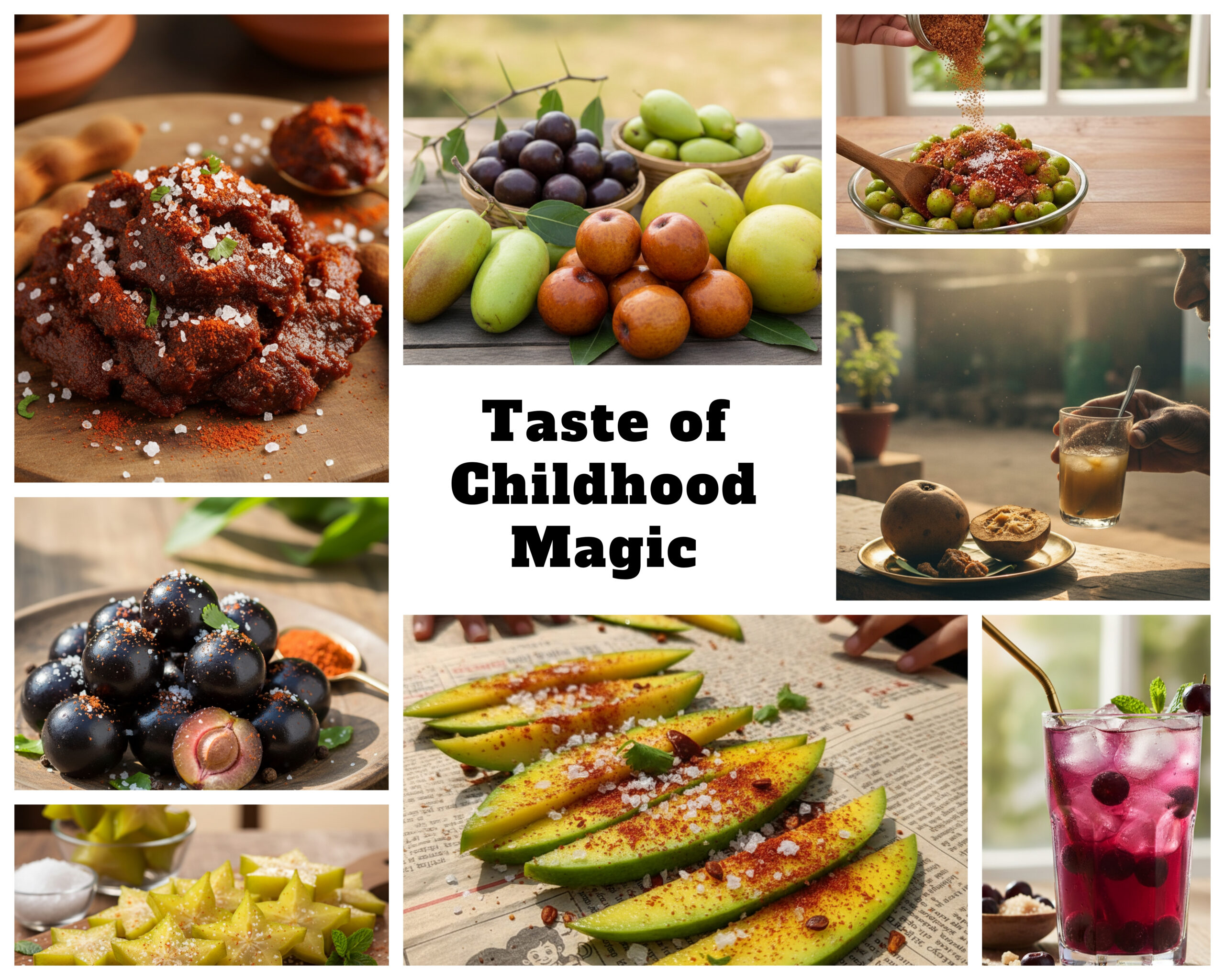Exotic Childhood Fruits That Made School Days Magical
Do you remember the thrill of spotting a rare fruit in a classmate’s tiffin or trading a juicy snack during recess?? Fruit like ber, khatti-mithi imli, kachi kairi, jamun, aamla, and other exotic delights weren’t just food – they were treasures. Every bite brought excitement, a little tang, a lot of sweetness, and memories of laughter echoing in school playgrounds…
In this blog I’m taking you on a nostalgic journey through lesser – known Indain childhood fruits..
These fruits weren’t just food—they were a childhood experience. Each bite carried a story: the excitement of bartering during recess, the sweet revenge of sneaking one from a friend’s tiffin, or the simple pleasure of tasting something rare and magical.
By recreating these fruits in simple recipes—candies, smoothies, chutneys, and salads—we can relive that magic and share it with the next generation.
1. Ber (Indian Jujube) –
Ripe ber sprinkled with salt and chili powder was a prized playground snack and a favorite for bartering with friends.
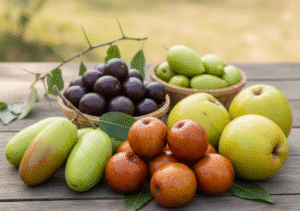
2. Imli (Tamarind Pods) –
Sticky tamarind pulp rolled into balls or chewed directly—it was a tangy delight worth trading with classmates..
1 cup tamarind pulp, 1/2 cup jaggery powder, pinch of salt, 1/2 tsp chili powder. Mix all ingredients, roll into small balls, refrigerate for 30 minutes, and enjoy a chewy tangy candy.

3. Kachi Kairi (Raw Mango)
Thin raw mango slices sprinkled with salt or chili were a summer-time school snack everyone fought to taste.
1 raw mango (julienned), 1 tsp chaat masala, 1/2 tsp roasted cumin powder, coriander leaves.. Toss all ingredients together. Serve fresh as a tangy summer salad.

4. Jamun (Black plum)
Finger-staining plums; rare in school tiffins, making them the ultimate trade item. Ripe jamun sprinkled with salt or chili taste so good..
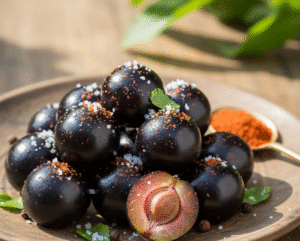
5. Amla (Indian Gooseberry)
Amla slices eaten with salt or jaggery were a health-boosting snack that also packed a punch of flavor.
Take fresh 10-12 amla (deseeded), 1/2 cup jaggery or sugar , 1/2 tsp cardamom powder.. Boil amla until soft, coat with jaggery, sun dry enjoy this delicous and tangy candies.
6. Karonda (Carissa carandas)
Picked from backyard trees, often salted and traded among friends during recess. 1 cup karonda, 1/2 tsp salt, 1/2 tsp chili powder.. Mix ingredients, store in a jar for 2–3 days, and enjoy tangy-sweet pickle with meals.
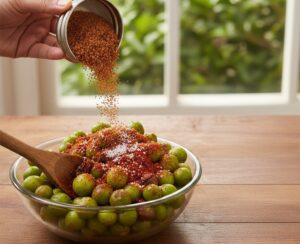
7. Wood Apple (Bael / Bel Fruit)
Scooping out the soft pulp from hard shells was a playful experience—perfect for sharing with friends. 1 cup bael pulp, 1 tbsp jaggery, 1 cup water, ice cubes.. Blend pulp with jaggery and water. Serve chilled for a refreshing drink.

8. Kokum (Garcinia indica)
Small pieces of kokum added to water or snacks for a cooling tang—rare but exciting. 5-6 kokum pieces, 2 cups water, 2 tsp sugar, pinch of salt.. Soak kokum in water for 30 mins, strain, add sugar and salt, serve chilled.
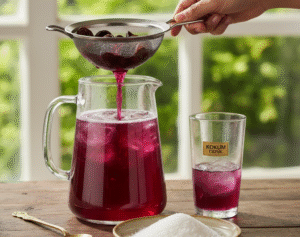
9. Phalsa (Grewia asiatica)
Tiny berries stained hands purple and made summer school breaks fun and messy. 1 cup phalsa, 1 tbsp sugar, 1 cup water, ice cubes.. Blend phalsa with sugar and water. Serve chilled for a refreshing summer drink.

10. Starfruit (Kamrakh / Carambola)
Rare fruit that amazed classmates with its star-shaped slices, perfect for playground trades. 1 starfruit (sliced), 1 tsp lemon juice, pinch of salt, 1 tsp sugar. Toss ingredients together. Serve chilled as a crunchy, tangy snack.
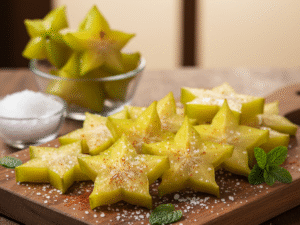
These fruits—ber, imli, kairi, jamun, amla, karonda, wood apple, kokum, phalsa, starfruit—aren’t just edible treasures; they are childhood memories captured in flavor. By creating simple, modern recipes, we can relive those magical school-time moments and introduce the next generation to India’s rich and exotic fruit heritage.
Whether it’s a tangy chutney, a sweet candy, or a refreshing sherbet, every bite brings back laughter, friendship, and the innocent joys of recess.

